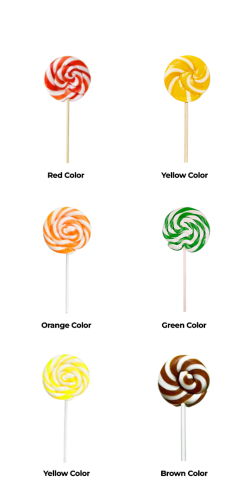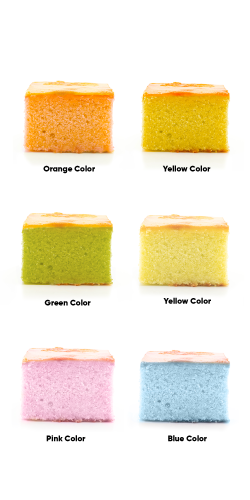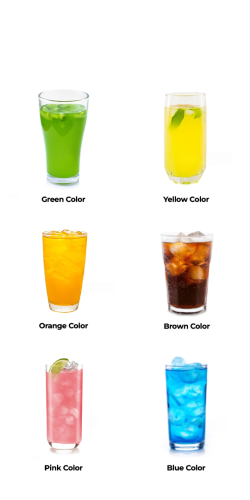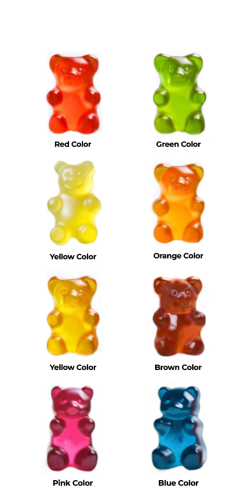
In a world where food is not only about taste but also visual appeal, vibrant colors play an essential role in making dishes more enticing and exciting. However, with growing concerns over artificial food dyes and their potential health risks, many are turning to natural food coloring as a safer and healthier alternative. From the deep reds of beets to the cool blues of spirulina, natural food colorings offer an exciting palette of hues to brighten your culinary creations while keeping them wholesome.
Whether you’re baking a cake, crafting ice creams, or decorating a plate, mastering the art of vibrant natural food coloring can elevate your cooking and baking game. This blog will take you on a colorful journey through nature’s own palette, exploring how to extract and use natural food colorings and their unique benefits.
Why Choose Natural Food Coloring?
Before diving into the world of vibrant hues, let’s take a moment to understand why natural food coloring is worth exploring:
Healthier Alternative: Artificial food dyes like Red 40, Yellow 5, and Blue 1 have been linked to health concerns such as hyperactivity, allergic reactions, and even cancer. In contrast, natural food coloring is derived from plant-based sources, which are typically safer and free from harmful chemicals.
Nutrient-Rich: Many natural food colors come with additional health benefits. For example, the deep purple of beet juice is packed with antioxidants, while green spinach powder offers a dose of vitamins A and K.
Sustainability: With growing concerns about the environmental impact of artificial dyes, turning to nature for color sources is a step toward more sustainable cooking practices.
Flavor Compatibility: Natural food colorings generally come with mild, complementary flavors. This allows you to enhance the aesthetic appeal of dishes without overpowering their taste.
Customization: Creating your own natural dyes gives you the flexibility to experiment and develop custom shades that suit your creations perfectly.
Popular Sources of Natural Food Colors
Now that we know why natural food coloring is worth the switch, let’s explore some of the most popular sources of vibrant food colors and how you can use them in your cooking.
1. Beets – Pink
Beets are a powerhouse when it comes to natural food coloring. Their deep, rich red hue is perfect for everything from cakes to smoothies and frostings. The natural pigment, betanin, gives beets their vibrant color and is highly effective as a natural dye.
- How to Use: You can juice fresh beets or make a concentrated beet powder for deeper colors. For cake batters or frosting, beet juice or powder can create a bright, almost neon pink that adds a fun pop to your dessert.
- Best For: Cakes, frostings, smoothies, sauces, and drinks.
2. Turmeric – Yellow
Turmeric, known for its distinct yellow-orange hue, is a favorite in natural food coloring. It’s vibrant, easy to work with, and imparts a mild earthy flavor that complements many dishes.
- How to Use: Use turmeric powder directly, or boil fresh turmeric root to create a more concentrated liquid. A small amount of turmeric goes a long way, so be sure to use it sparingly to avoid overwhelming your food with flavor.
- Best For: Rice, cakes, cookies, smoothies, custards, and even savory dishes like curries.
3. Spinach – Green
Spinach not only offers a rich, leafy green color but also provides a healthy boost of vitamins and minerals. It’s perfect for creating lush greens in cakes, icings, and more.
- How to Use: You can juice spinach to extract the green pigment or blend it into a smooth puree. Spinach powder is also available, offering convenience and consistency in recipes.
- Best For: Cakes, muffins, smoothies, icings, and pasta.
6. Purple Cabbage – Purple
Purple cabbage contains anthocyanins, the natural pigments responsible for its purple color. When mixed with an acid (like lemon juice), the color can shift to a bluish hue, offering versatility for your creations.
- How to Use: Boil purple cabbage in water to create a concentrated cabbage juice. For purple hues, add a touch of lemon juice. For blue, use a more neutral pH.
- Best For: Icing, cakes, frostings, and beverages.
7. Annatto – Orange
Annatto, derived from the seeds of the achiote tree, gives a warm, orange-yellow color to food. It’s widely used in Latin American and Caribbean cuisine.
- How to Use: Annatto seeds are typically soaked in hot water to release the color, then the infused liquid can be used as a dye.
- Best For: Rice, cakes, sauces, and custards.
How to Use Natural Food Coloring
Using natural food coloring is straightforward, but it does require some experimentation to get the desired results. Here are some tips to help you master the art of natural food coloring:
Start with Small Amounts: Natural colors can be more subtle than artificial ones, so start by adding a little at a time. You can always add more to intensify the hue.
Consider pH: Some natural colorants change based on the pH of the food. For example, purple cabbage will appear blue in alkaline environments and purple in acidic ones. Experiment with adding lemon or baking soda to achieve different tones.
Combine Colors: Don’t be afraid to mix natural colorings to create new shades. For instance, combining turmeric (yellow) with beet juice (red) can give you an orange or warm peach hue.
Use Gel or Powder: Some natural colorings come in gel or powder form, making them easier to mix into batters, frosting, and other creations. Powders are especially helpful if you want a more concentrated hue.
Be Aware of Texture Changes: Some natural food colors, especially those from vegetables and fruits, can alter the texture of the food. For example, using beet juice in frosting might make it a bit runnier, so be mindful of the consistency.

100% Natural
Our food colors are derived entirely from natural sources, ensuring purity and safety.

Versatile Applications
A wide range of applications, including confectionery, beverages, and dairy etc.

Vibrant & Stable
Experience vibrant and consistent colors enhancing your product's visual appeal.

Healthy Choices
Free from synthetic chemicals, our colors are safe and beneficial for health-conscious consumers.

Plant-Based Ingredients
Our colors are derived exclusively from plants, ensuring natural and safe options for your products.

Exporting to 100 Countries
Trusted by clients worldwide, we proudly export our natural food colors to over 100 countries.
Frequently Asked Questions
Yes, BOS can be pricier, but its benefits in health, sustainability, and natural appeal are worth the investment.
In most cases, yes! While achieving specific shades may require some experimentation, BOS offers a versatile range.
BOS natural colors typically last as long as synthetic dyes and fade only slightly in certain applications.
BOS colors are generally safe. However, those with allergies to specific plant sources should check labels.
Absolutely! BOS is versatile across various temperatures and cooking methods.
Natural food colors are plant-based pigments extracted from fruits, vegetables, seeds, or minerals, used to enhance food's appearance while being safe, chemical-free, and appealing to health-conscious consumers.
Yes, natural food colors are safe to consume as they are plant based food colors, minimally processed, and approved by regulatory authorities for food use.
Natural food colors are made by extracting pigments from fruits, vegetables, seeds, or minerals using water, oils, or alcohol, followed by drying, filtering, or blending.
Foods like carrots, spinach, beets, turmeric, paprika, spirulina, and annatto contain natural coloring agents, providing vibrant hues without synthetic additives.
Yes, you can make natural food colors at home using ingredients like spinach for green, beetroot for red, turmeric for yellow, and carrots for orange.
No, natural food colors generally do not affect the taste, as they are derived from plants and have minimal to no flavor impact.
Natural food colors can last up to 1 year when stored properly in a cool, dry place, away from sunlight, maintaining their potency.
Yes, natural food colors tend to be more expensive than artificial ones due to the sourcing, processing, and fewer available production options.
Natural food colors can replace most artificial colors, but they may not achieve the same intensity. They provide a more sustainable, eco-friendly option for coloring food naturally.
Yes, natural food colors are generally suitable for most dietary restrictions, being plant-based and free from artificial additives, gluten, and animal products.




